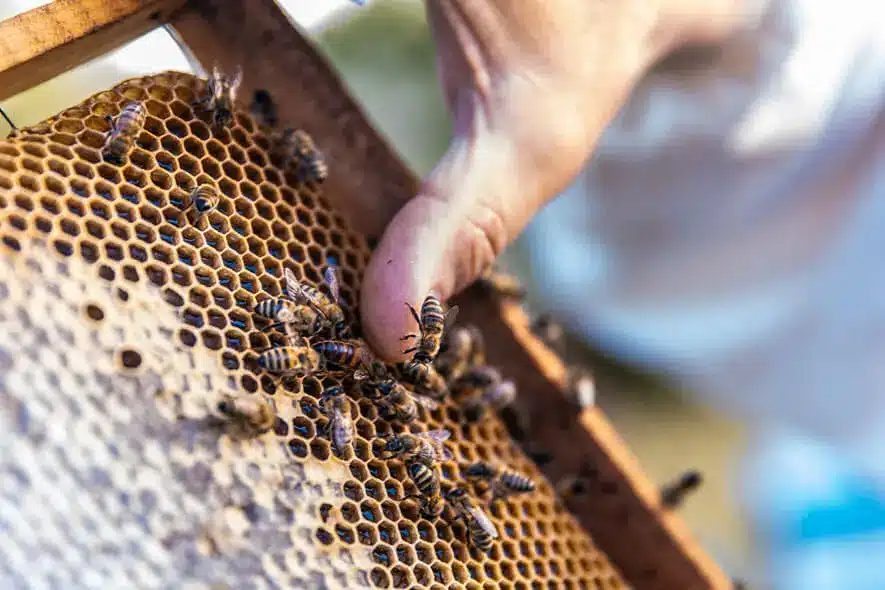1. Drones Are Super Lazy
Did you know that the male honey bees, also known as drones, are extremely lazy and won’t
move out of their hives no matter what? Male honey bees only exist to mate with the queen and
once they’ve mated, they just die!
2. Buzzing Honey Bees
There might have been many occasions when you were annoyed by the buzzing sound of a honey
bee circling your ceiling fan. The interesting fact here is that honey bees apparently beat their
four wings at 11,400 beats per minute and travel at a speed of 15 miles per hour.
3. Worker Bees Have Roles
Worker bees have strictly designated roles that may range from food breeding, receiving nectar,
and cleaning and guarding the hives. Some special worker bees, also known as undertakers,
perform the task of pulling dead bees out of the hive.
4. Killer African Honey Bees
According to a paper published by the entomology department of the University of Florida,
African honey bees are potentially dangerous and have destroyed many agricultural farms
across the country. Dr. Philip Koehler, professor of entomology at the University of Florida, and
his colleagues have taken initiatives to educate farm owners about these honey bees and also
train them in pest management.
5. Royal Jelly For The Queen
The queen honey bees are reared after a collective decision is given by the worker bees. A larva is
fed with royal jelly from which the queens bees typically develop within 16 days. Queen bees
differ in their morphology from other bees and have a greater size when compared to the
workers.
6. Honey Bees Help In Pollination
Did you know that your favorite fruits and nuts might have been pollinated by honey bees?
Honey bees are essential for the production of almonds, melons, and many other crops because
they help in pollination. That’s why the European Commission is urging people to stop using
pesticides that kill European honey bees unless they pose a threat to human beings and other
animals.
7. Honey Bees Are Hardworking
You would be surprised to know that honey bees fly for around 90,000 miles to collect
approximately 1 kg nectar. Just so you know, 90,000 miles is equivalent to circling the earth
thrice. So, every time you waste a drop of honey, do remember the hard work put in by bees
around the world.
8. Short Life Of Worker Bees
It’s sad that in spite of being such useful insects, worker bees only live for 4 to 9 months during
the winter season. And, during scorching summers, they only survive for six months after which
their dead bodies are cleared by undertakers.
9. It’s Honey Bees Vs. Bumblebees
Honey bees and bumblebees are constantly at loggerheads because they tend to search the same
places for food. However, they’ve reached an amicable decision; wherein bumblebees go
foraging in the morning while honey bees do their job in the afternoon.
10. Dancing To Communicate
If you ever catch a honey bee dancing, know that they’re trying to communicate with their coworkers.
Their dancing styles convey the location and type of resources available in a certain
part of a field or garden.


